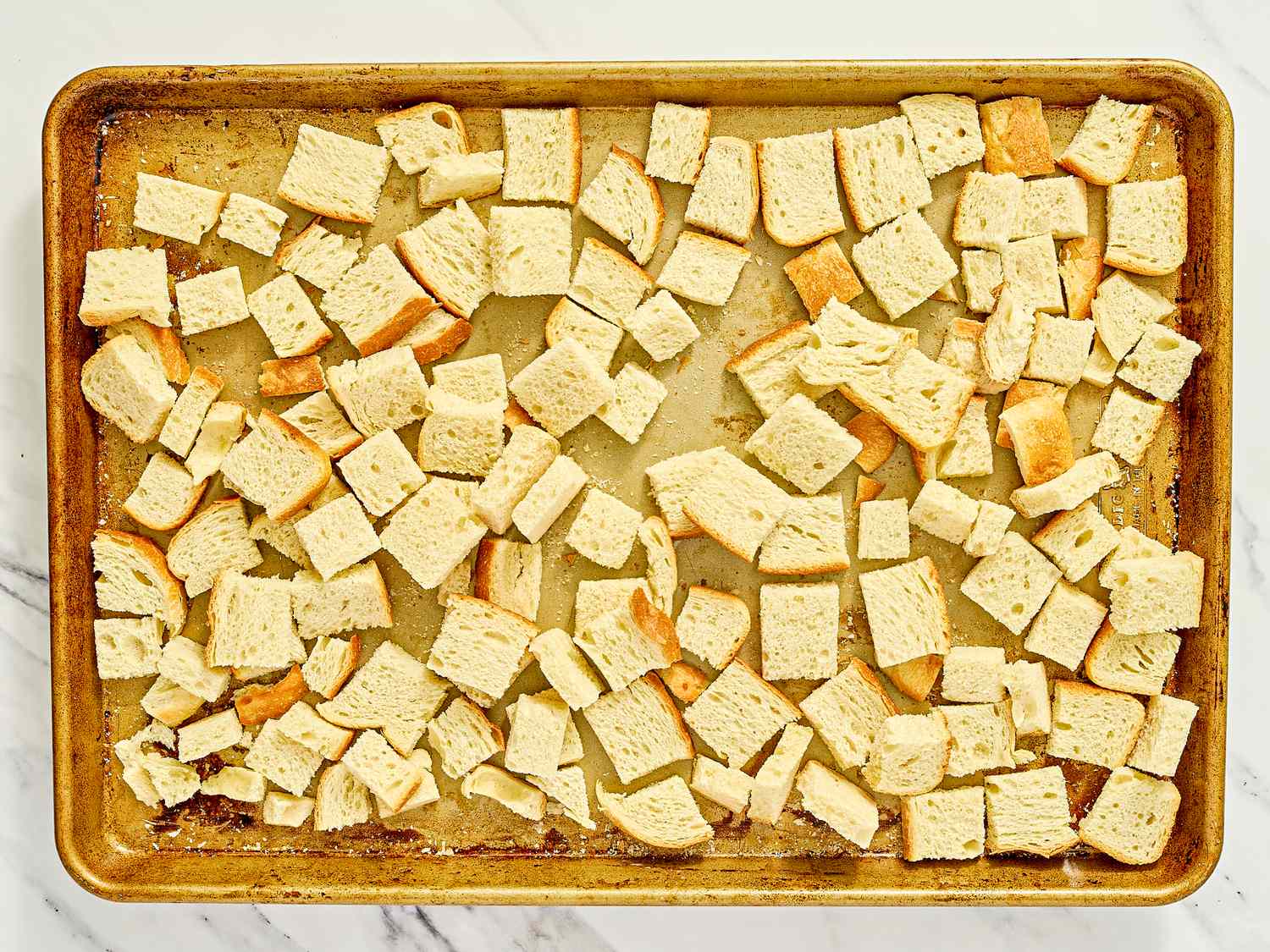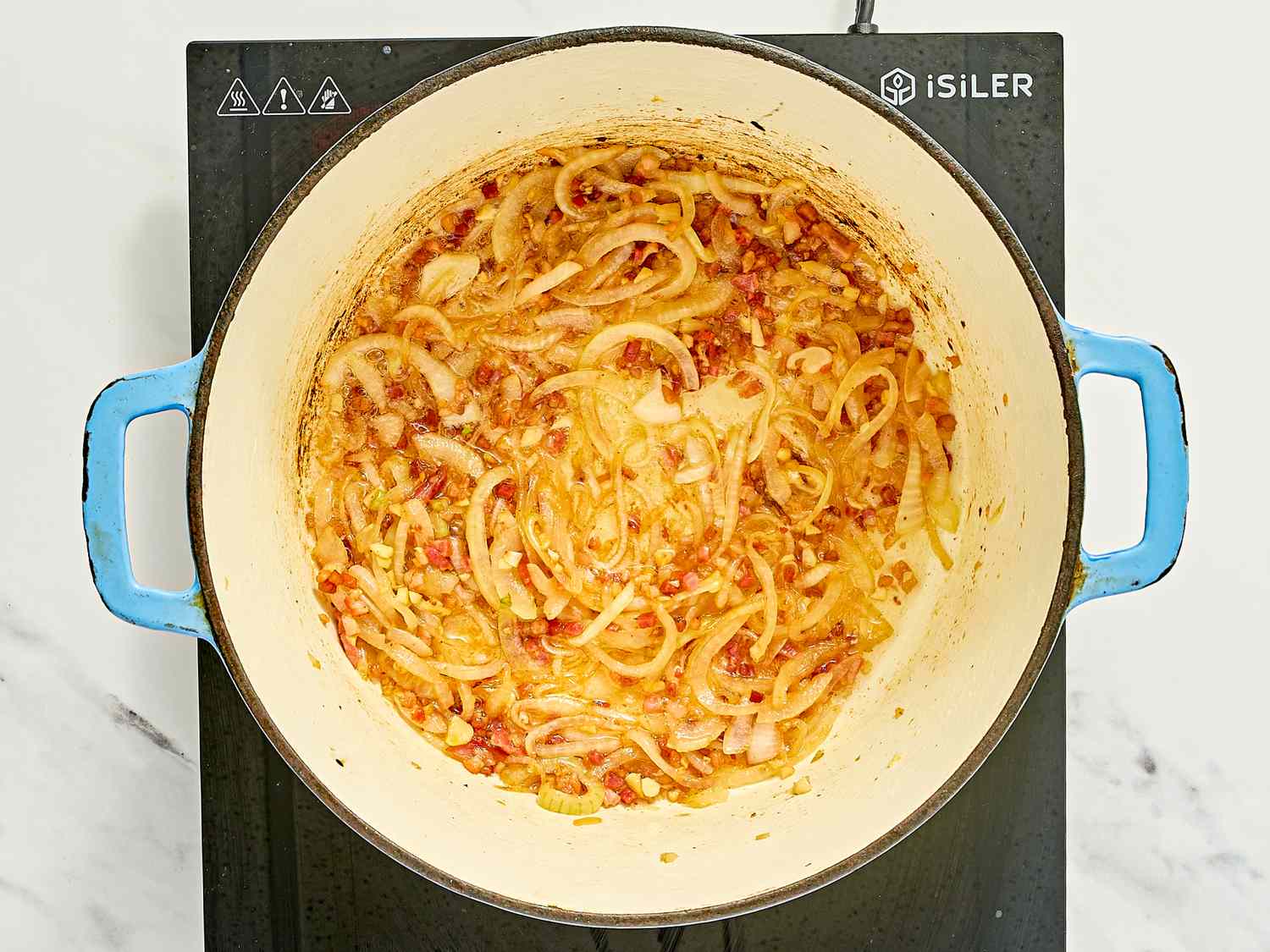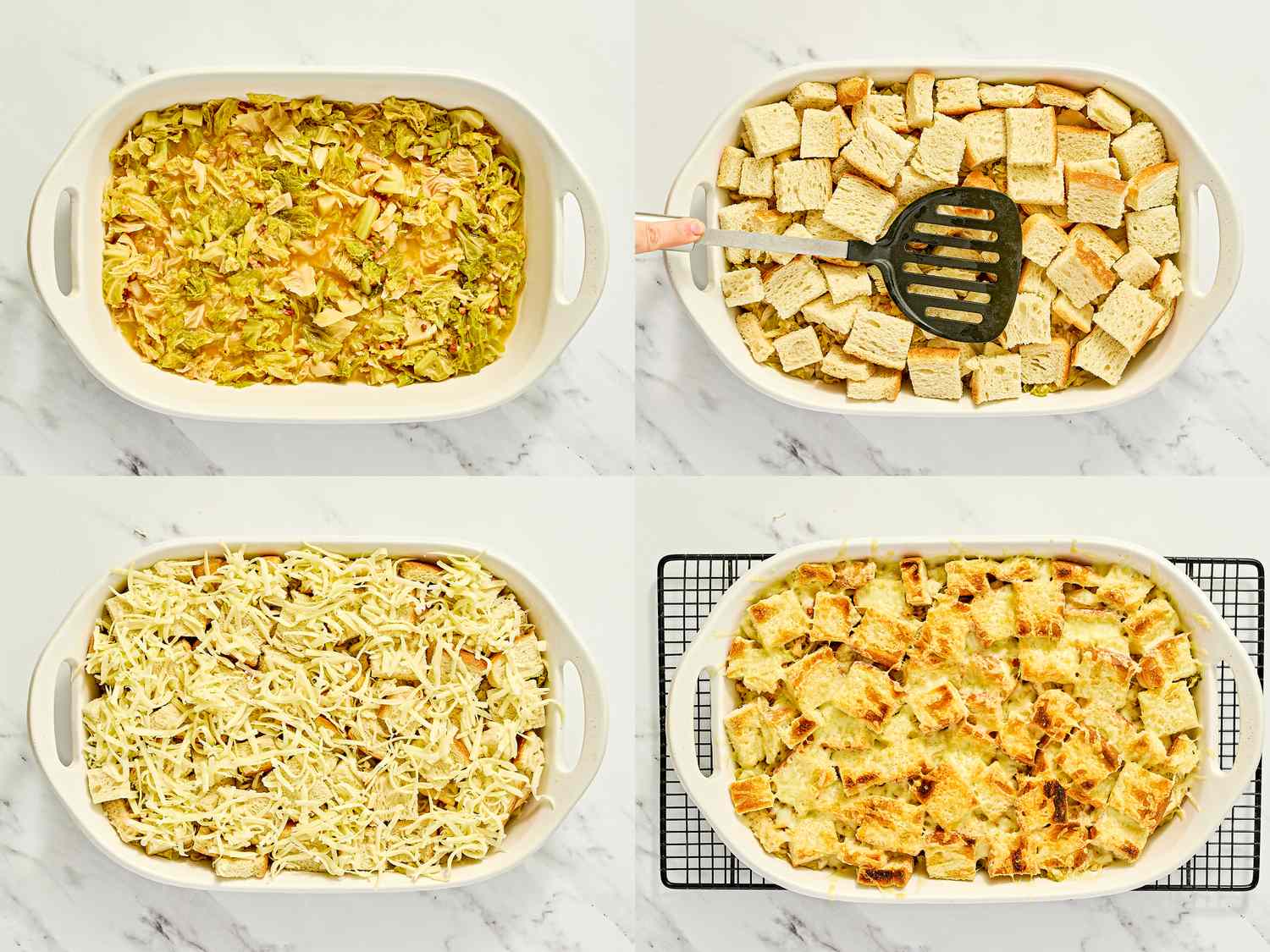This Bubbly, Cheese-Topped Italian Soup Is French Onion’s Hearty Alpine Cousin
Like French onion soup went skiing in the Alps and came back heartier.
- Slowly drying the rye bread in a low oven creates sturdy, crisp cubes that soak up broth without turning soggy, giving the finished soup structure.
- A long, gentle simmer draws out the cabbage's natural sweetness, tenderizing it while infusing the broth with flavor.
I've had a lot of soups in my life—velvety bisques, brothy noodles, "stewps" that make deeply satisfying dinners—but this humble, northern Italian cabbage soup might be my favorite. Ever. Soeupa alla valpellinentze, a regional winter dish from Valle d'Aosta in the Italian Alps (and sometimes found across the border in Piedmont), is not your standard bowl of broth. The name literally means "soup," but what comes out of the oven is more like the gooey, molten top of French onion soup, only deeper, earthier, and—to me—far more interesting.
I first had soeupa alla valpellinentze years ago while skiing in the Italian Alps (I realize what an obnoxiously picturesque sentence this is). It was a meal that made me reconsider everything I thought I knew about bread and cabbage. Between the snow outside and the smell of browned cheese and broth inside, it felt less like eating soup and more like being wrapped in a blanket of beef stock and mountain air. Every fall since, I've been chasing that flavor—trying to re-create the balance of sweet, tender cabbage, nutty rye, and tangy Alpine cheese that makes this dish so hauntingly good.
My recipe stays as close to that memory as possible: a dish that's essentially a layered casserole disguised as a soup. It starts with Savoy cabbage, a variety that's a bit sweeter and more tender than the standard green kind. When braised with pancetta, onion, and a bay leaf, the cabbage melts into soft, silky ribbons that the savory broth clings to. A long, gentle simmer coaxes out its natural sweetness, which partners well with the salt and fat of the pancetta.
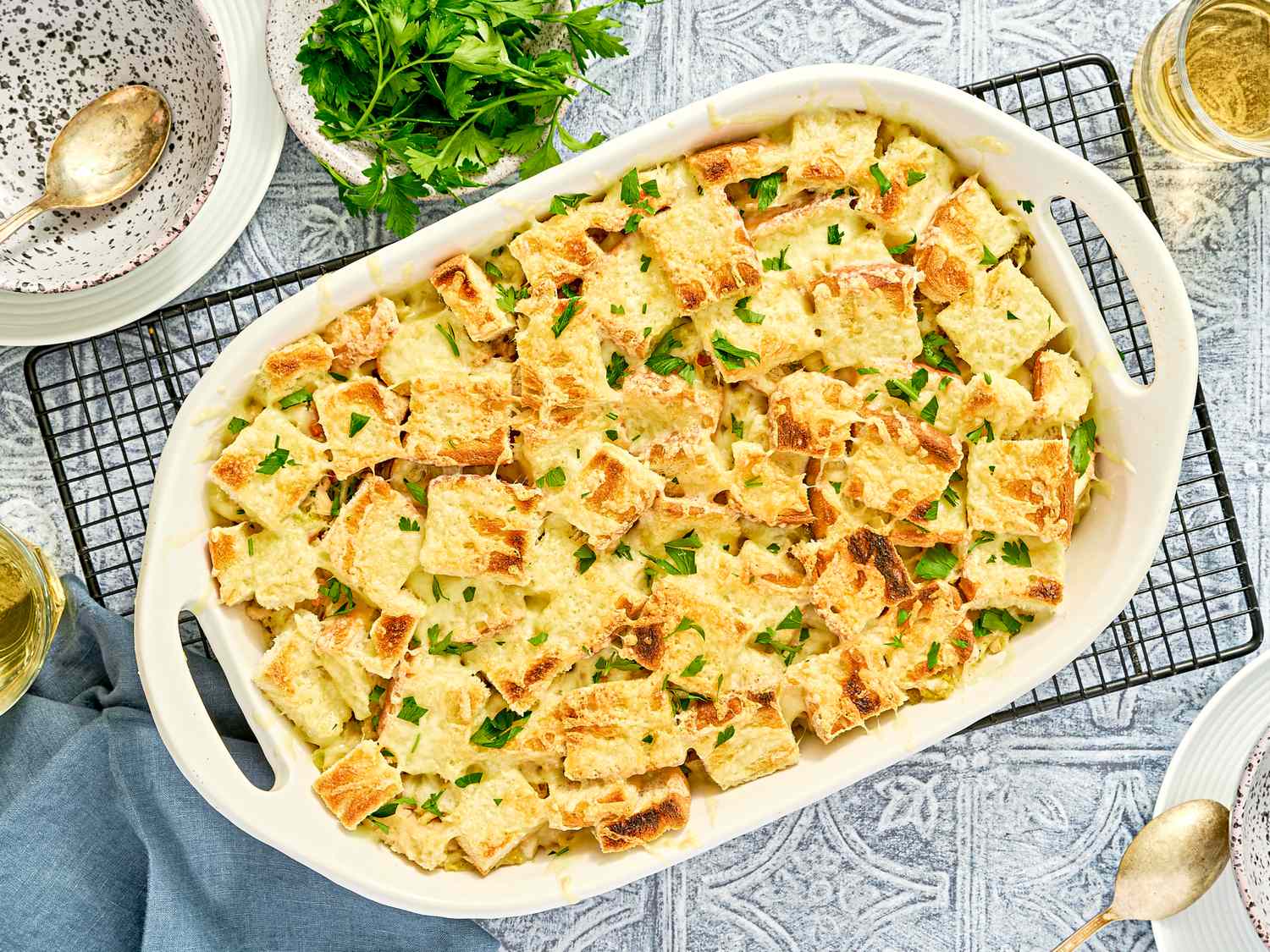
The Underrated Hero: Caraway (and Its Perfect Partner, Rye)
What really makes this dish sing for me isn't the cabbage or the cheese—it's the caraway. I can't help it. I have a deep, probably outsized love for caraway. It rarely ever gets the credit it deserves. It's a little old-world, a little unexpected, and just a pinch can completely transform a dish. It adds a subtle sweetness and a toasty, anise-like warmth that ties perfectly into the rye bread traditionally used in this dish.
And that rye is no background player either. Its earthy rhobust flavor mirrors the Alpine setting this dish comes from, and it stands up beautifully to the rich broth and melty cheese. Cubing and slowly drying the bread in a low oven is key—it concentrates its flavor and gives it the structure it needs to soak up the broth without turning soggy. When those crisp cubes absorb the pancetta-scented cabbage and beef stock, and a hint of caraway drifts through, you get this incredible layering of nutty, herbal, and savory flavor that's rustic and refined.
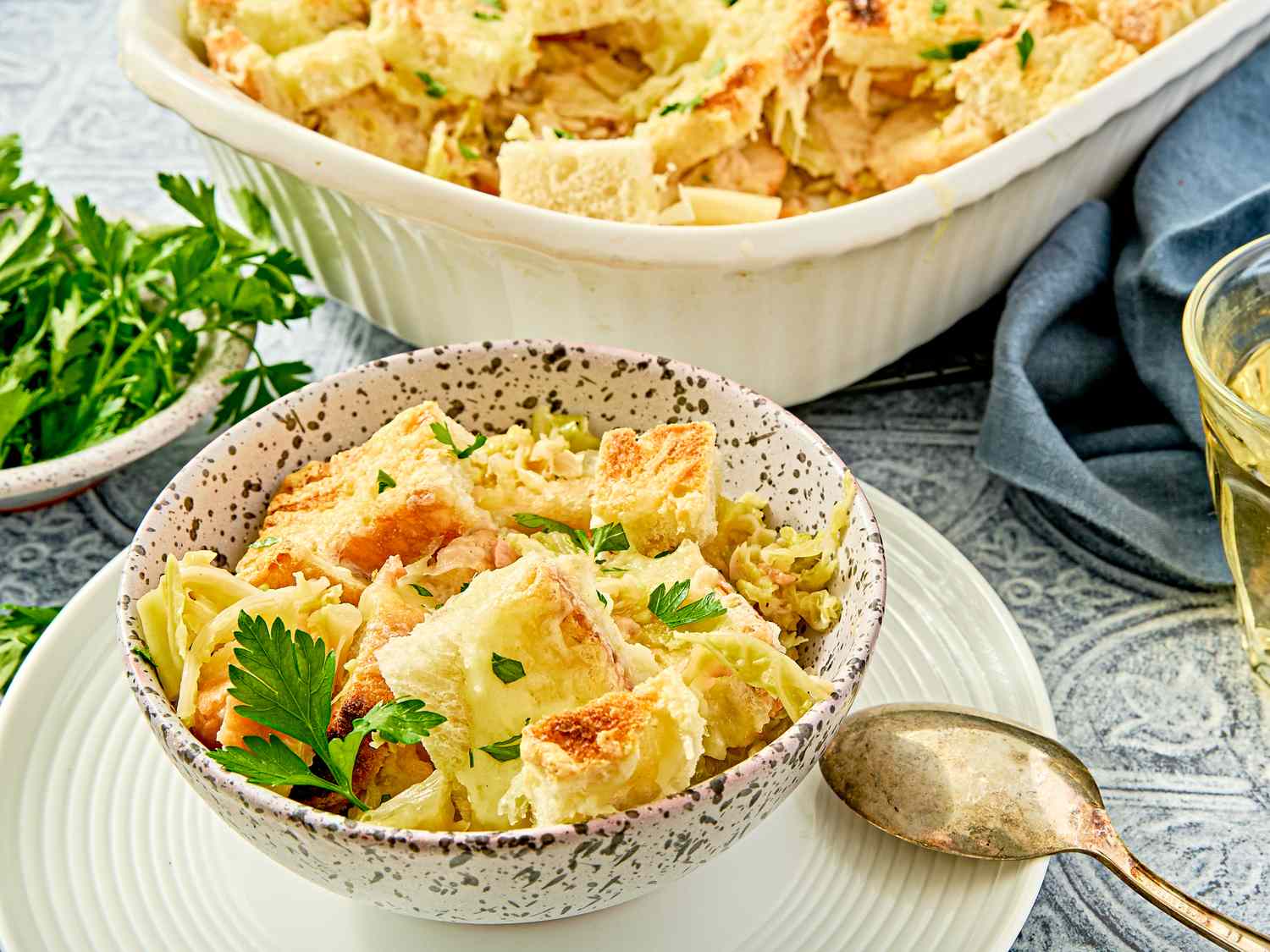
Key Techniques to Build Flavor in Every Layer
Every component of soeupa alla valpellinentze relies on small, careful techniques. These aren't steps to rush. The reward is in how everything comes together: crisp bread that holds its shape, pancetta that seasons every bite, and broth that tastes like it's been simmering all day. Here are some tips to get it right.
Skip the stale bread: Nonna might have made this with day-old rye, but we at Serious Eats have learned that for many recipes, including classic bread pudding and stuffing, slow-drying bread in a low oven at around 250°F produces a better result than grabbing a stale loaf. As mentioned above, slowly drying the bread removes moisture evenly without browning, giving each cube a sturdy but porous texture that soaks up the cabbage broth without disintegrating. Stale bread, on the other hand, dries unevenly, so instead of acting like a sponge, it just collapses into broth-logged mush.
Render the pancetta slowly: Pancetta is the base of this dish's richness, so it needs to be treated with care. Starting it over medium-low heat lets the fat melt gently. You're not looking for hard, crispy bits here; you want pancetta with supple, browned edges, a chewy bite, and a glossy layer of rendered fat. That rendered fat will become the cooking medium for the onions, garlic, and cabbage, infusing every layer of the dish with its flavor.
Bloom the caraway and garlic: Toasting a pinch of caraway seeds in the fat brings the spice to life. The seeds crackle, releasing their essential oils into the pancetta fat and infusing the entire pot with their toasty, nutty perfume. Add it with the garlic and let the garlic just barely turn golden before adding the cabbage—it's a small window of time, but it deliversrs a huge aromatic payoff.
Start with the right stock: If you have homemade beef stock stashed in your freezer, use it here—it’ll add real body and depth to the dish. But if you don’t, skip the store-bought beef stock altogether. As Daniel discusses in his French onion soup recipe, most versions are a flavorless salt lick masquerading as stock, and they’ll flatten everything you’ve built so far. A good-quality low-sodium chicken stock or broth is the better choice; its cleaner, more balanced flavor complements the pancetta and cabbage instead of bulldozing them.
Simmer gently, season thoughtfully: Once the broth and bay leaves go in, keep the heat low and your patience high. A slow simmer tenderizes the cabbage while letting the flavors mingle. Make sure to taste and season the soup if needed before layering into the casserole dish. It's easier to adjust seasoning now than later when the bread and cheese enter the equation.
Building Layers of Comfort
Once the flavorful cabbage soup is ready, it's time to layer. You'll start by spreading half of the brothy cabbage mixture into a baking dish, then scatter the dried rye cubes over the top, then repeat. Gently press everything down so the broth seeps into the bread. That saturation is key for a well-made soeupa alla valpellinentze.
It's topped with a generous blanket of Fontina cheese, another regional treasure from Valle d'Aosta. True Fontina, made from the milk of cows grazing in the high Alpine meadows, melts like nothing else—stretchy, nutty, and just funky enough to keep things interesting. Under the broiler, it bubbles and blisters into a golden crust that traps everything underneath. When you break through the top layer of molten cheese, your spoon sinks into tender cabbage and broth-soaked rye, all melding into one deeply savory, rustic bite with a texture that's soft and spoonable, yet substantial and structured. One bite, and I'm back in the Alps—make this soup and you can be too.
Recipe Details
This Bubbly, Cheese-Topped Italian Soup Is French Onion’s Hearty Alpine Cousin
Save Print Cook Mode (Keep screen awake)
Ingredients
-
1 pound (453 g) hearty rye bread, cut into 1 1/2 to 2-inch pieces
-
2 tablespoons unsalted butter
-
5 ounces pancetta, finely chopped
-
1 medium onion, halved and thinly sliced
-
1 teaspoon Diamond Crystal kosher salt; for table salt, use half as much by volume or the same weight
-
3 cloves garlic, minced
-
1/2 teaspoon caraway seeds
-
1 1/2 pounds Savoy cabbage (about 1 head), cored and cut into 1-inch pieces
-
4 1/2 cups homemade beef stock or chicken stock or store-bought low-sodium chicken broth
-
2 bay leaves
-
6 ounces fontina cheese, shredded
-
1 tablespoon chopped fresh parsley
Directions
-
Adjust oven rack to middle position and heat oven to 250°F. On a rimmed baking sheet, spread bread in an even layer and bake, stirring occasionally, until dried and crisp, 30 to 45 minutes. Let croutons cool completely.
![bread toasting]()
-
In a Dutch oven or large pot, butter over medium-low until butter is melted. Add pancetta and cook until browned but still slightly chewy and fat is rendered, 6 to 8 minutes.
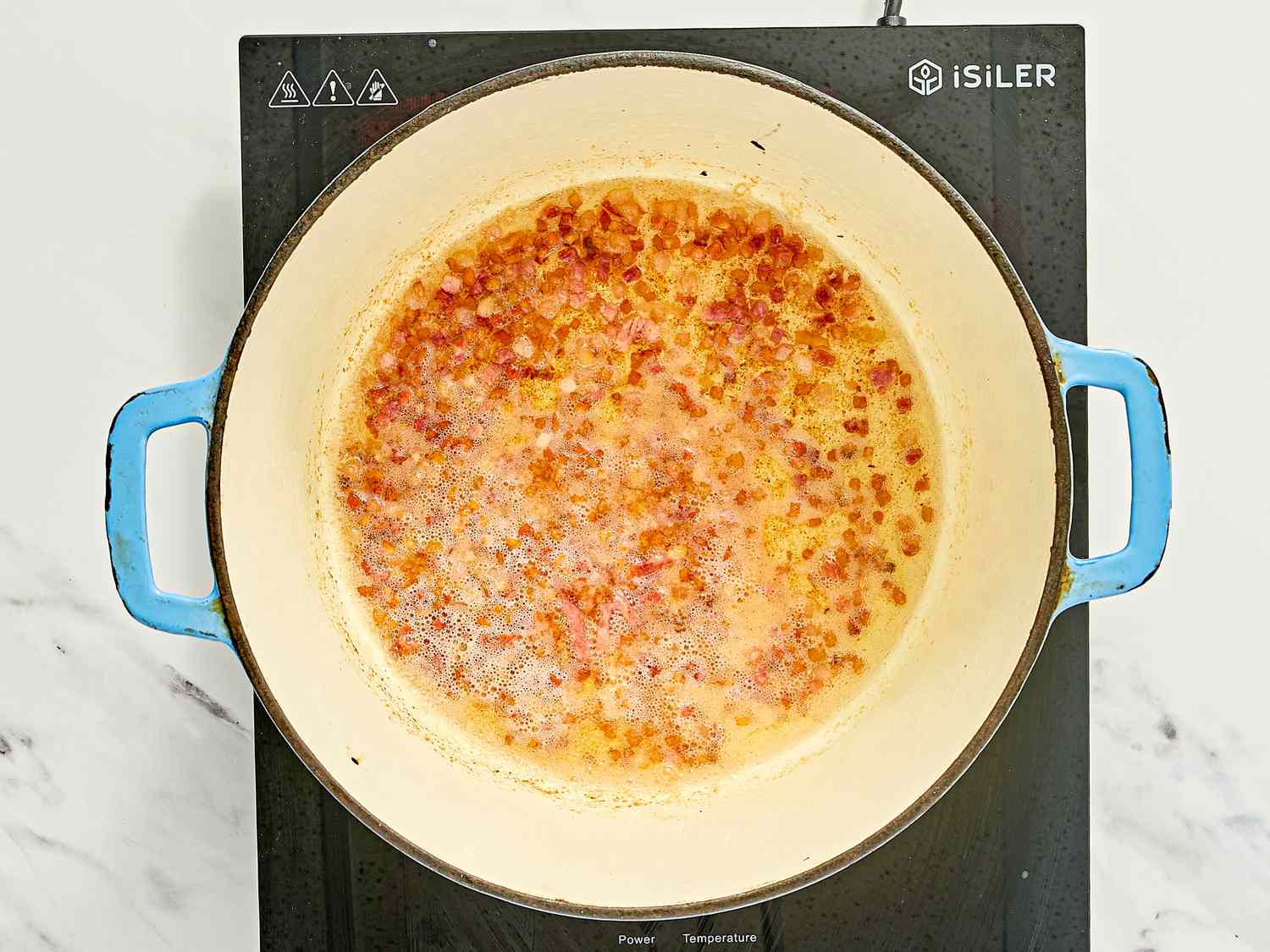
-
Stir in onion and salt and cook over medium heat until softened and lightly browned, 6 to 8 minutes. Stir in garlic and caraway seeds and cook until fragrant, about 1 minute.
![step 3, onion cooking]()
-
Add cabbage, broth, and bay leaves and stir to combine. Bring to a boil, then reduce heat to low, cover, and simmer until cabbage is tender, 30 to 45 minutes.
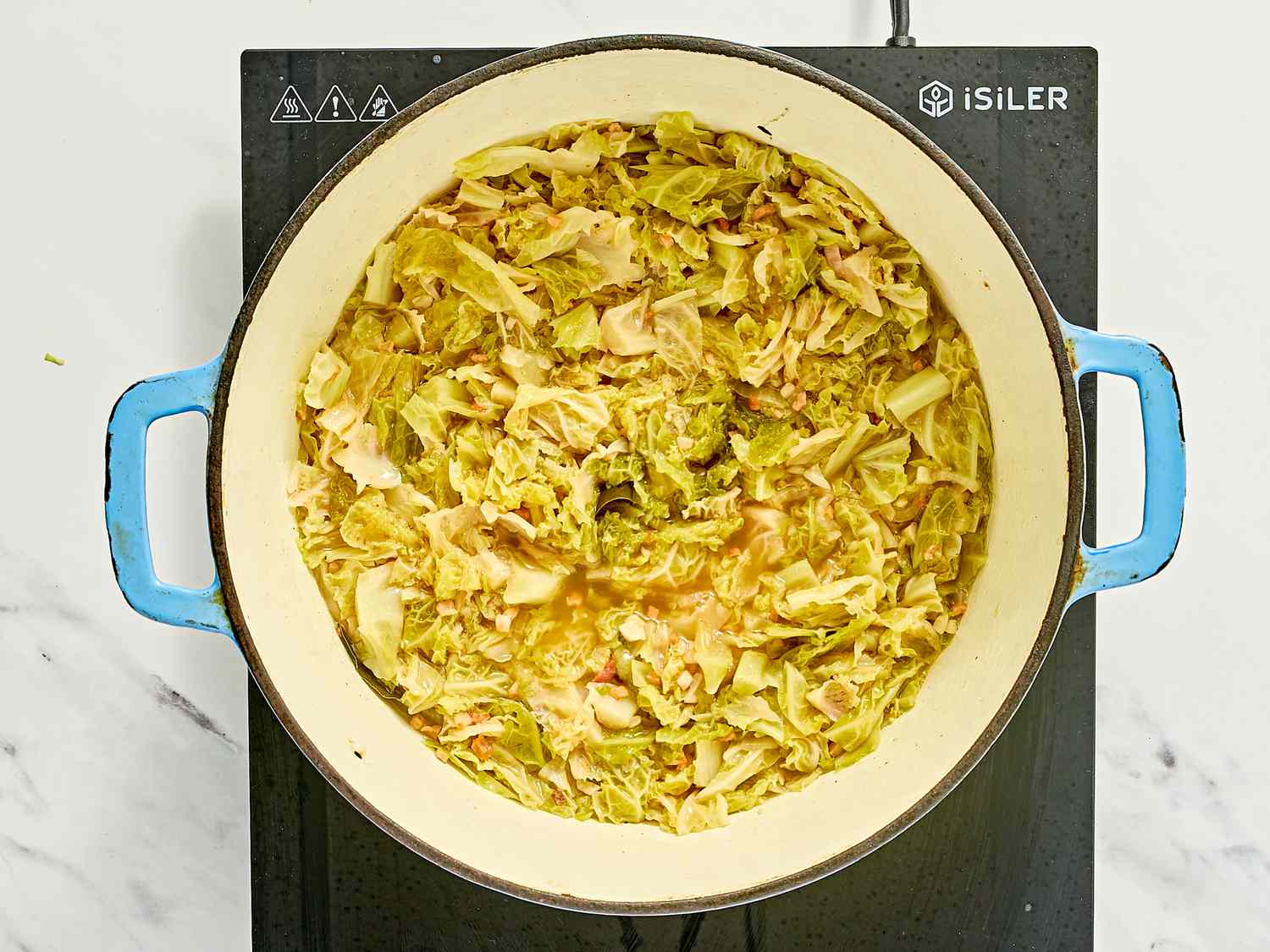
-
Adjust oven rack to 6 inches from upper broiler coils and heat broiler on high. Discard bay leaves and spread half of cabbage mixture evenly in the bottom of a 9-by-13-inch broiler-safe baking dish, then top with half of the croutons. Repeat the layering with the remaining cabbage mixture, topping it with the croutons. Using a wide flat spatula, gently press down on croutons to submerge and saturate. Sprinkle fontina cheese evenly over top. Broil until cheese is melted and spotty brown, 2 to 4 minutes. Sprinkle with parsley and serve.
![cooked dish]()
Special Equipment
Rimmed baking sheet, Dutch oven or large pot, 9-by-13-inch broiler-safe baking dish
Make-Ahead and Storage
Leftovers can be refrigerated in an airtight container for up to 3 days. Reheat in a 350°F oven until warmed through and the bread on top is toasty.
- The Latest
- Recipes
- Recipes By Ingredients
- Italian
- Mains


